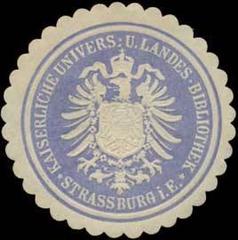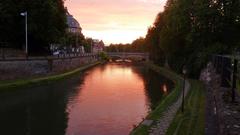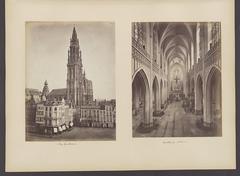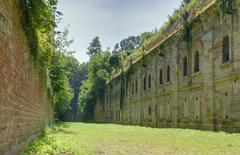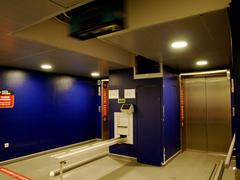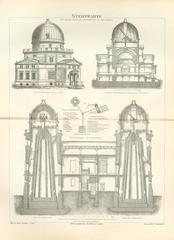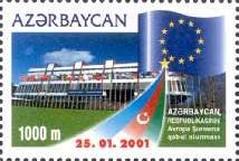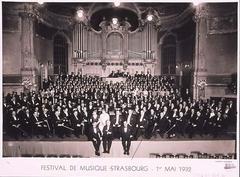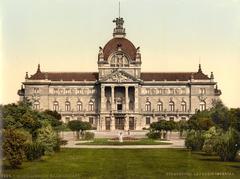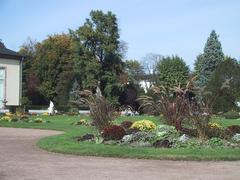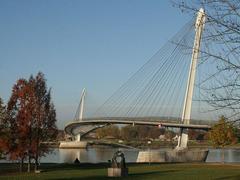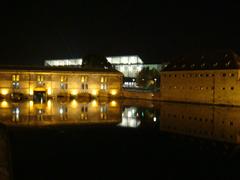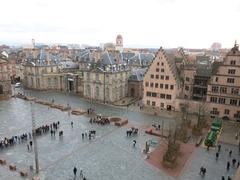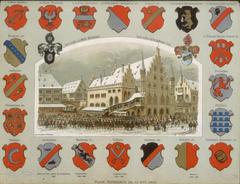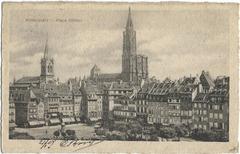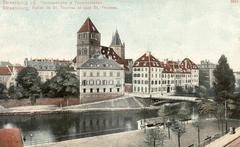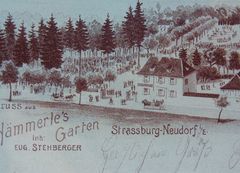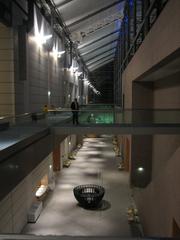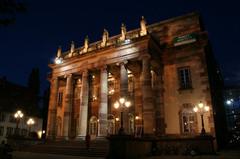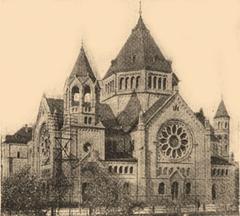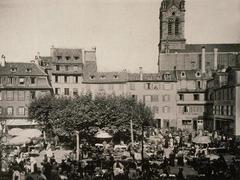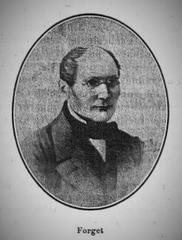Centre de Données Astronomiques de Strasbourg: Visiting Hours, Tickets, and Guide
Date: 14/06/2025
Introduction: Discover the Centre de Données Astronomiques de Strasbourg (CDS)
Located in the historic city of Strasbourg, France, the Centre de Données Astronomiques de Strasbourg (CDS) stands as a global leader in astronomical data management and research. Established in 1972, the CDS was created to centralize and standardize astronomical information, growing into a vital hub for scientists, educators, students, and astronomy enthusiasts worldwide. Its flagship services—SIMBAD, VizieR, and Aladin—enable users to access, analyze, and visualize data on millions of celestial objects, supporting research and education at all levels.
The CDS is housed within the Strasbourg Astronomical Observatory, an architectural and scientific landmark inaugurated in 1881 and situated in the UNESCO-listed Neustadt district. The observatory not only features historic telescopes and antique instruments but also hosts interactive exhibitions in the “Crypte aux étoiles” museum, providing a rare blend of scientific innovation and cultural heritage for visitors.
While the CDS itself is a research center and does not maintain regular public visiting hours, the Strasbourg Astronomical Observatory opens its doors to the public for guided tours, special events, and exhibitions. This guide details how to access the site, what to expect from your visit, and how to make the most of your time in Strasbourg’s scientific heart.
For the most current information, refer to the official CDS website and the Strasbourg Observatory website.
Table of Contents
- Introduction
- History and Evolution of the CDS
- Integration with the Strasbourg Astronomical Observatory
- Visiting Information
- Scientific Significance and International Role
- Core Services and Tools (SIMBAD, VizieR, Aladin)
- Virtual Observatory and Data Sharing
- User Support and Educational Outreach
- FAQs
- Visual and Interactive Resources
- Practical Visitor Tips
- Conclusion and Next Steps
- References
1. History and Evolution of the CDS
Founded in 1972 by the French National Institute for Astronomy and Geophysics (INAG), CDS was initially dedicated to compiling stellar data to advance Milky Way studies. By 1983, its mission expanded to all astronomical objects beyond the Solar System, adopting its current name. Over the decades, CDS has pioneered digital scientific data dissemination and has become central to international astronomy, contributing to standardization and interoperability in data sharing (source).
2. Integration with the Strasbourg Astronomical Observatory
The CDS operates within the Strasbourg Astronomical Observatory, a historic institution founded in the late 19th century. The observatory is renowned for its large refracting telescope and the “Crypte aux étoiles” museum, which displays rare antique astronomical instruments. Its location in the Neustadt district—a UNESCO World Heritage site—provides visitors with access to both scientific and architectural heritage.
3. Visiting Information
3.1 Opening Hours and Tickets
- Observatory Hours: Tuesday to Sunday, 10:00 AM – 5:00 PM; closed Mondays and public holidays.
- Tickets: Free entry for children under 12; adults and students pay a modest fee. Tickets are available on-site or online. Group tours require advance booking.
- CDS Access: The CDS itself does not operate as a public museum; visits for research or collaboration require prior arrangement.
3.2 Guided Tours and Special Events
- Guided tours are available on weekends and during special astronomy-themed events.
- Public lectures, workshops, and educational activities are regularly offered in collaboration with the observatory.
- Check the Strasbourg Observatory website for current schedules and booking information.
3.3 Accessibility and Travel Tips
- The observatory is wheelchair accessible, with ramps and elevators.
- Located in the Neustadt district, it is easily reachable by public transport and offers nearby parking.
- Comfortable footwear is recommended for exploring the museum and observatory grounds.
3.4 Nearby Attractions
- Jardin botanique de l’Université de Strasbourg
- Strasbourg Planetarium
- Historic Neustadt District
- Strasbourg Cathedral & Petite France
These sites offer additional cultural and scientific experiences to complement your visit.
4. Scientific Significance and International Role
The CDS is recognized internationally as a cornerstone of astronomical research infrastructure. Its databases and tools serve millions of queries daily and play a crucial part in global scientific collaborations, open science initiatives, and the development of the Virtual Observatory—a global framework for seamless access to astronomical data (source).
5. Core Services and Tools of the CDS
5.1 SIMBAD
The SIMBAD database is the international reference for identifying and cross-referencing astronomical objects beyond the Solar System, cataloguing over 11 million objects and linking to hundreds of thousands of scientific publications (SIMBAD User Guide).
5.2 VizieR
VizieR provides access to the world’s largest collection of astronomical catalogs—over 25,000—enabling advanced data mining and cross-matching for research and education.
5.3 Aladin
Aladin offers interactive visualization and analysis of sky images, overlaying multi-wavelength data and integrating user observations. It is available as both a web application and desktop client.
5.4 Additional Tools
- X-Match: Enables cross-identification of sources across large astronomical datasets (Westminster Astronomical Society).
All services are freely accessible online:
6. The Virtual Observatory and Data Sharing
CDS has played a leading role in the creation of the Virtual Observatory (VO), a global digital framework that enables seamless discovery, access, and use of distributed astronomical data. Through the International Virtual Observatory Alliance (IVOA), the CDS helps set interoperability standards, ensuring its databases and tools integrate smoothly with other global archives (source).
7. User Support, Documentation, and Educational Outreach
CDS offers extensive documentation, tutorials, and helpdesk support for its services. Regular workshops, training sessions, and open days are organized both onsite and online. The observatory’s public programs, in partnership with CDS, aim to inspire interest in astronomy and data science across all ages.
8. Frequently Asked Questions (FAQ)
Q: Can I visit the CDS without an appointment?
A: No; the CDS is a research institution. Visits require prior arrangement, typically for academic or collaborative purposes.
Q: What are the public visiting hours for the Strasbourg Observatory?
A: Tuesday to Sunday, 10:00 AM–5:00 PM; closed Mondays and public holidays.
Q: Are there entrance fees?
A: Observatory entrance is free for children under 12; adults and students pay a small fee. CDS online services are free to access.
Q: Are guided tours available?
A: Yes; tours are offered during weekends and special events. Advance booking is recommended.
Q: Is the site wheelchair accessible?
A: Yes, ramps and elevators are available.
Q: Are there educational programs?
A: Yes; the observatory and CDS regularly offer public lectures, workshops, and outreach activities.
9. Visual and Interactive Resources
- Museum and Observatory Tours: Strasbourg Observatory website
- Virtual Sky Atlas and Data Visualization: Aladin Lite
- Multimedia and Photo Galleries: Available on the CDS website
Alt text: Strasbourg Astronomical Observatory, a historic astronomical site and visitor attraction
10. Practical Visitor Tips
- Plan Ahead: Check event calendars and book tours in advance.
- Combine Visits: Explore the botanical garden, planetarium, and Strasbourg’s historic city center.
- Travel Sustainably: Strasbourg offers excellent public transport and is highly bike-friendly (Visit Strasbourg).
- Explore Online: Familiarize yourself with CDS databases and tools before your visit for a more rewarding experience.
Conclusion: Plan Your Astronomical Experience in Strasbourg
The Centre de Données Astronomiques de Strasbourg, set within the historic Strasbourg Astronomical Observatory, offers an exceptional journey into the world of astronomical research, data science, and cultural heritage. While the CDS itself is not a walk-in museum, its impact is accessible through the observatory’s public programs and, globally, via its online platforms. Visitors to Strasbourg can enrich their stay by engaging with these world-class scientific resources and exploring the city’s vibrant cultural landscape.
For the latest updates, program schedules, and visitor information, consult the official CDS website and the Strasbourg Observatory site. Explore the universe from home by using the CDS’s online services, and follow both institutions on social media for news on events, workshops, and scientific discoveries.
References
- Centre de Données Astronomiques de Strasbourg and Strasbourg Astronomical Observatory: Historical Background and Visitor Information, 2025
- Explore the CDS in Strasbourg: Visiting Hours, Tickets, and Astronomical Data Services, 2025
- Visiting CDS Strasbourg: Exploring the Virtual Observatory and Astronomical Data Services, 2025
- Visiting the Centre de Données Astronomiques de Strasbourg (CDS): Hours, Tours, and Scientific Highlights, 2025
- SIMBAD User Guide
- Planetarium of Strasbourg
- University Museums
- Visit Strasbourg
- CDS Wikipedia page

